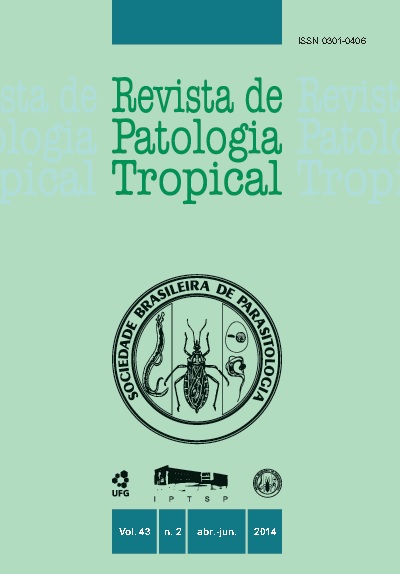SEROLOGICAL AND EPIDEMIOLOGICAL SCREENING TO ESTIMATE CONGENITAL Toxoplasma gondii INFECTION IN GUAYAQUIL, ECUADOR
DOI:
https://doi.org/10.5216/rpt.v43i2.31131Keywords:
toxoplasmosis, congenital transmission, epidemiology, fetal risk.Abstract
Serological testing, by indirect haemagglutination and ELISA was performed in 4 age groups: 0 to <5, 5 to <10, 10 to <15 and 15 to <20 years old, to find prevalence and quinquennial incidence. An interview to assess risk factors was performed. The statistical analysis was performed for independent variables and bivariate correlations to calculate the odds ratio. The total number of observations was 578: 285 male and 292 female (1 not determined) and median age was 9.7. An increase in the prevalence was related to age, reaching 60.2% in the group between 15 and 20 yearsold, when compared to the same age group in 1989 (78.3%) showing an 18% decrease. Several hypotheses to explain this decrease were proposed. There is a steep increase at the age of 10. The statistical analysis does not demonstrate a direct correlation with any of the risk factors consigned in the interview, with the exception of exposure to young felines (kittens). The risk for acquiring congenital toxoplasmosis was estimated as 1.8 per thousand (18 per ten thousand), hence 106 cases are expected per year, with 69 (65%) of them being asymptomatic, and 37 with different degrees of severity: 17 with mild, 11 severe and 9 with death at birth. Each year there would be 28 newborns with evident lesions and additionally an undetermined number of cases with late onset lesions within the initially asymptomatic group (65%), with unknown socioeconomic impact.
Downloads
Downloads
Published
How to Cite
Issue
Section
License
The manuscript submission must be accompanied by a letter signed by all authors stating the full name and email address, confirming that the material has not been published or is under consideration for publication elsewhere, and agreeing to transfer copyright in all media and formats for Journal of Tropical Pathology. The authors will not be paid for published articles. They are solely responsible for the content of those articles, even if the Editor holds the right to adjust them to the norms of the journal.
The reviewers will not be paid for the peer review process.

